Working on a small laptop screen can be tough, which is why many people choose to use an iPad as a second monitor for extra space.
With Apple’s Sidecar feature or third-party apps, you can extend or mirror your Mac screen in just a few steps.
This makes multitasking easier, whether you’re a designer moving tools aside, a writer keeping notes open, or even a Windows user connecting with the right software.
In this guide, we’ll cover built-in options, handy apps, and simple fixes to turn your iPad into a reliable second display.
Quick Insights 💡:
- Sidecar (Built-in): Easiest way to extend or mirror the Mac screen
- Wired Connection: Use a USB-C or Lightning cable for stability
- Wireless Connection: Connect via Wi-Fi and the same Apple ID
- Third-Party Apps: Duet Display or Luna Display for more flexibility
- Keep the iPad charged and updated for the best performance
Also Read: iPad with Keyboard vs MacBook: Which Should You Buy?
Understanding How to Use an iPad as a Second Monitor
Using an iPad as a second screen allows people to extend their workspace without purchasing an additional monitor. It creates more room for apps, documents, or tools, which can improve focus and efficiency in daily tasks.
What Does Using an iPad as a Second Monitor Mean
When someone uses an iPad as a second monitor, the iPad functions as an additional display connected to a computer.
This can be done with built-in features like Sidecar on macOS or with third-party apps such as Duet Display or Splashtop Wired XDisplay.
The setup works by extending or mirroring the desktop. Extending gives more screen space, while mirroring shows the same content on both screens. Users can choose based on their needs.
This approach does not replace a full-size monitor, but it utilizes a device that many people already own.
It can be connected via a cable for improved performance or wirelessly for greater flexibility.
Benefits of a Second Screen Setup
Adding an iPad as a second screen provides clear advantages for both work and study. The main benefit is extra screen real estate, which reduces the need to switch between windows.
Some common uses include:
- Keeping a video call open on the iPad while working on the main display
- Viewing reference documents or notes side by side with active tasks
- Running chat or email apps on the iPad while focusing on projects on the main monitor
This setup can also help when traveling. Instead of carrying a bulky monitor, the iPad offers a portable option that works with laptops.
Productivity and Workflow Improvements
Using an iPad as a second monitor can enhance how people manage tasks. Developers can place code on one screen and testing tools on the other. Students can keep research articles open on the iPad while writing papers on the main display.
Creative workers also benefit. Graphic designers can use the iPad as a tool for toolbars or palettes, leaving the main monitor clear for artwork.
Video editors can keep timelines on one screen and preview windows on the other.
By splitting tasks between two displays, users reduce clutter and minimize the need for constant window switching.
This small change often leads to smoother workflows and better time management.
Also Read: Can the iPad Pro Replace Your Laptop? Find Out Now
Method 1 – Use Sidecar to Connect iPad as Second Monitor

Sidecar lets a Mac user extend or mirror their desktop onto an iPad. It works wirelessly or with a cable, and it supports Apple Pencil for input when using creative apps.
Before You Begin
Before starting, both devices need to meet the basic requirements.
- The Mac must run macOS Catalina or later, and the iPad must use iPadOS 13 or a later version.
- Both devices also need to be signed in with the same Apple ID.
- Wi-Fi, Bluetooth, and Handoff should be turned on for both devices.
These settings allow the Mac and iPad to connect and communicate properly. If a VPN is active, ensure it does not block local networking, as this can interfere with Sidecar.
Not every Mac and iPad model supports Sidecar. Apple lists compatible devices on its support page, so it’s essential to confirm compatibility before attempting to connect. Checking this in advance saves time and avoids connection errors.
Setup Steps
Once the devices are prepared, the setup is quick.
- On the Mac, open Control Center from the menu bar.
- Select Display, then choose the iPad from the list of available devices.
- After selecting the iPad, the user can decide whether to extend the Mac desktop or mirror it.
- Extending adds more screen space, while mirroring shows the same content on both screens.
If the connection is wireless, the iPad will appear automatically when in range. If using a USB-C or Lightning cable, the Mac will detect the iPad as soon as it’s plugged in. Both methods provide stable performance.
Tips
Sidecar works both wirelessly and with a wired connection. A cable offers more stability in crowded Wi-Fi environments and charges the iPad while in use. Wireless mode offers greater flexibility for portability.
Apple Pencil adds another layer of functionality. It allows users to draw, sketch, or mark up documents directly on the iPad, with the input reflected on the Mac. This is useful for creative work in apps like Photoshop or Illustrator.
The iPad also features on-screen controls for quick access to modifier keys, including Command, Option, Control, and Shift. These shortcuts make it easier to use Mac apps without needing a physical keyboard.
Method 2 – Use Third-Party Apps
Third-party tools provide users with more flexibility when Sidecar is unavailable or when they require additional features.
These apps work across both Mac and Windows and often provide wired and wireless options for connecting an iPad as a second display.
Duet Display
Duet Display is a paid app that turns an iPad into a second monitor using either a cable or Wi-Fi. It works on both macOS and Windows, making it useful for individuals who frequently switch between systems.
A wired connection usually gives the best performance. It reduces lag and keeps the display smooth, even when running video or design software. Wireless mode is available, but it may depend on the strength of the network.
Key points about Duet Display:
- Platform support: macOS and Windows
- Connection types: USB cable or Wi-Fi
- Performance: Low latency, especially with a wired setup
- Cost: One-time purchase, with optional upgrades for extra features
Many users choose Duet Display because it is simple to install and does not require extra hardware. It is a practical choice for individuals who want to quickly extend their screen without purchasing adapters.
Luna Display
Luna Display utilizes a small hardware dongle, along with software, to connect an iPad as a secondary screen.
The dongle plugs into a Mac or Windows computer, creating a direct link that makes the connection more stable than Wi-Fi alone.
Unlike apps that rely solely on software, Luna Display provides a smoother experience for tasks that require consistent performance.
It also supports both wired and wireless modes, providing users with flexibility in setting up their workspace.
Key points about Luna Display:
- Platform support: macOS and Windows
- Connection types: Hardware dongle with USB-C, HDMI, or Mini DisplayPort
- Performance: Stable and reliable, works well for creative work
- Cost: Hardware purchase, includes software access
Luna Display is often preferred by individuals seeking a long-term solution with robust performance.
The hardware approach makes it more dependable, especially for users who need a second screen for professional use.
Also Read: How to Connect External Display to iPad: A Simple Guide
Can You Use Your iPad As a Second Monitor Without Sidecar

Yes, it is possible to use an iPad as a second monitor without Sidecar. This can be helpful for individuals with older Macs, work laptops that cannot use an Apple ID, or Windows PCs.
Several third‑party apps make this setup simple. Popular choices include:
- Duet Display: Works with both Mac and Windows. Can connect through USB for smoother performance.
- spacedesk: A free option that works mainly with Windows. Uses Wi-Fi to extend or mirror the screen.
- Air Display: Offers both wired and wireless connections for Mac and Windows.
Each app has different features. Some focus on speed with a wired USB connection, while others opt for Wi-Fi for greater flexibility. A wired setup usually gives less lag and clearer image quality.
Here is a quick comparison:
|
App |
Works With |
Connection Options |
Notes |
|
Duet Display |
Mac, Windows |
USB, Wi-Fi |
Smooth with USB, paid app |
|
spacedesk |
Windows only |
Wi-Fi |
Free, good for basic use |
|
Air Display |
Mac, Windows |
USB, Wi-Fi |
Flexible but may cost more |
These tools give users a way to expand their desktop even when Sidecar is not available. They may not always match the speed and clarity of Apple’s built‑in feature, but they provide a practical and reliable option for most setups.
Connecting an iPad as a Second Monitor on Windows
An iPad can extend or mirror a Windows PC display with the help of software tools and proper settings. Users can connect through apps, adjust Windows display options, or use wireless features like AirPlay for screen sharing.
Third-Party Apps for Windows Integration
Windows does not include a built-in feature to link directly with an iPad. As a result, third-party apps are the most common solution.
Popular options include
- Duet Display
- Splashtop Wired XDisplay
- iDisplay
These apps connect over USB or Wi-Fi and let the iPad act as either an extended display or a mirror of the PC screen.
Most apps require installing software on both Windows and the iPad. Once installed, the user connects the devices with a cable or joins the same Wi-Fi network.
The app then enables the PC to recognize the iPad as an additional monitor.
Some apps offer additional features, such as touch input, Apple Pencil support, or adjustable resolution.
Users should check the system requirements, as older versions of Windows or iPadOS may not be compatible with all tools.
A quick comparison:
|
App |
Connection |
Key Feature |
|
Duet Display |
USB/Wi-Fi |
Smooth performance with low lag |
|
Splashtop Wired XDisplay |
USB |
Free basic version available |
|
iDisplay |
Wi-Fi/USB |
Works with multiple devices |
Display Settings for Windows and iPad
After installing the app, users must adjust display settings in Windows. On a Windows PC, pressing Windows + P opens quick display options. This menu lets the user choose between Duplicate, Extend, or Second screen only.
For more control, they can open Settings > System > Display. From there, Windows shows both the main screen and the iPad. The user can drag the displays to match their physical layout. This step is important because it aligns the mouse movement between screens.
Resolution and scaling can also be adjusted. Lowering the resolution may improve performance on older iPads. Higher resolution provides more workspace but may use more system resources.
On the iPad, most apps allow choosing between landscape or portrait mode. This makes it easier to set up the display for tasks like reading documents or editing spreadsheets.
Troubleshooting Issues When Using an iPad as a Monitor

Sometimes the iPad may not connect or display properly when used as a monitor. These problems often relate to software versions, network settings, or simple device glitches.
Common issues and quick fixes:
- iPad not detected: Both devices must use the same Apple ID for Sidecar to work.
- Laggy performance: A wired USB connection usually gives smoother results than Wi-Fi.
- Sidecar not showing: Check that macOS and iPadOS versions support Sidecar. Older versions may not work.
- Frequent disconnects: Restarting both devices and reconnecting often solves this.
If the connection still fails, users should confirm both devices are on the same Wi-Fi network. Using a stable power source for the iPad also helps prevent random drops.
A simple table can make it easier to match problems with solutions:
|
Issue |
Quick Fix |
|
iPad not detected |
Sign in with the same Apple ID |
|
Laggy performance |
Use a wired USB connection |
|
Sidecar not showing |
Update to supported macOS and iPadOS |
|
Disconnects often |
Restart both devices and reconnect |
By checking these basics first, most connection or performance issues can be resolved without advanced steps.
Also Read: 5 Pro Methods to Connect iPad & iPad Pro to External Monitors
Conclusion
Using your iPad as a second monitor for your Mac is one of the most practical and powerful features of the Apple ecosystem. It transforms your devices into a single, cohesive workstation.
Now you know exactly how to use an iPad as a second monitor for Mac, whether through Apple’s Sidecar, third-party apps, or wired/wireless setups. It’s one of the easiest ways to expand your workspace without investing in an extra monitor.
Always Remember:
- Sidecar is the simplest built-in solution for Mac + iPad
- Wired connections give the best performance for creative work
- Third-party apps expand compatibility and features
👉 Ready to protect and optimize your iPad for daily use? Explore Chesona’s premium iPad cases:
FAQs About Using an iPad as a Second Monitor
People often want to know how to connect an iPad with Windows, whether two iPads can be linked, which devices support Sidecar, and if Wi-Fi or cables are required. The answers depend on the device, software, and connection method being used.
How to use an iPad as a second monitor for Windows?
Windows does not support iPad as a second screen by default. To make it work, users need third-party apps like Duet Display or Splashtop Wired XDisplay. These apps enable the iPad to function as an extended display when connected via USB or Wi-Fi.
Can I use another iPad as a second screen?
An iPad cannot serve as a second screen for another iPad directly. Apple does not provide built-in support for this feature. Some third-party apps may offer remote desktop or screen sharing, but this is not the same as extending a display.
Does Sidecar work with all Macs and iPads?
Sidecar has hardware and software limits. It requires macOS Catalina or later and iPadOS 13 or later. Only certain models support it, such as newer MacBook Pro, MacBook Air, iMac, Mac mini, and iPad Pro, iPad Air (3rd gen or later), and iPad (6th gen or later).
Do I need Wi-Fi to use iPad as a monitor?
Wi-Fi is not always required. Apps like Duet Display work over a USB cable, which can reduce lag. Sidecar works wirelessly but also supports a wired connection for more stability. Users can choose the method that fits their setup.
What cables are required to connect an iPad as a second monitor?
A USB-C to USB-C cable is used with newer iPads and Macs. Older iPads may require a Lightning to USB-A or Lightning to USB-C cable. The right cable depends on the iPad model and the computer’s available ports.
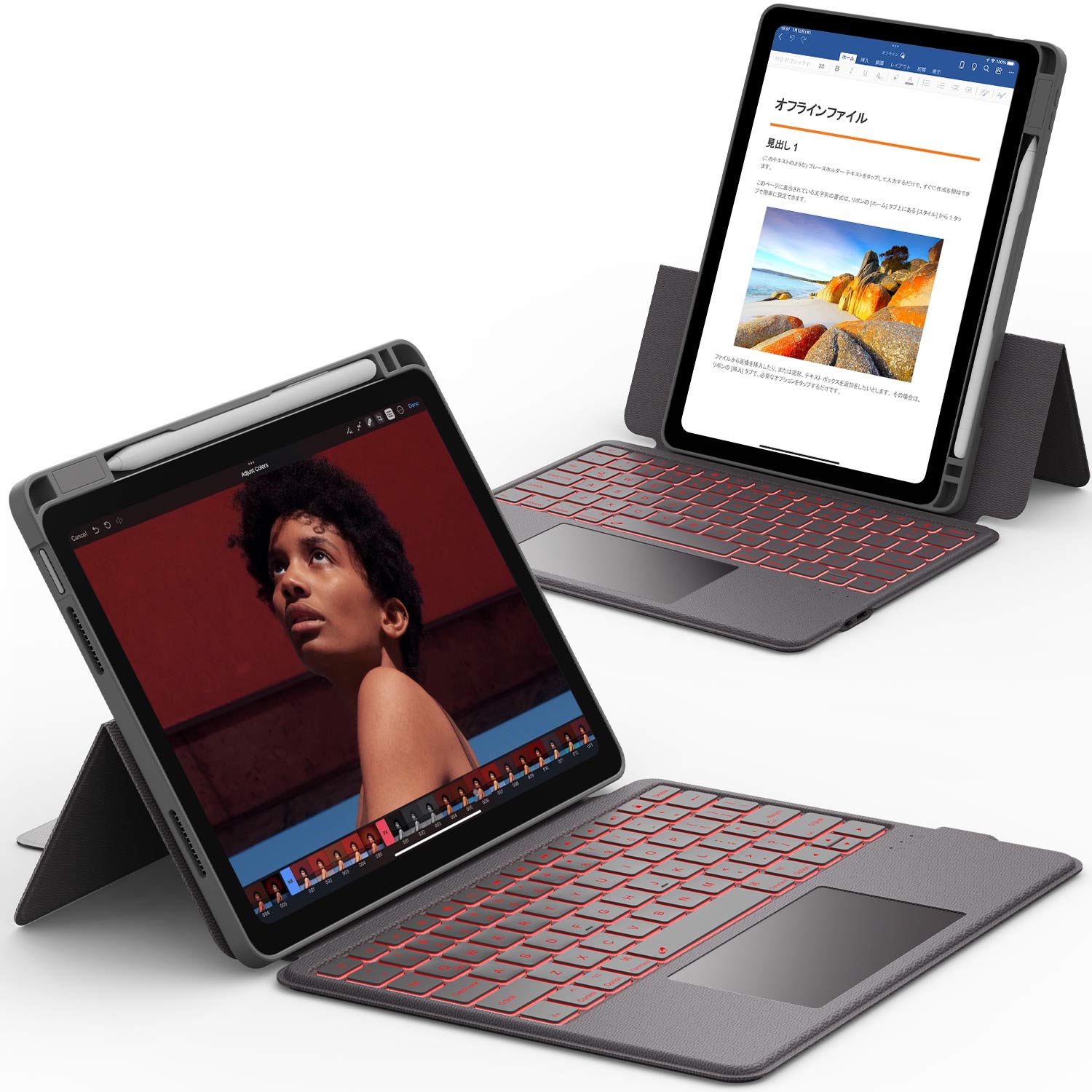

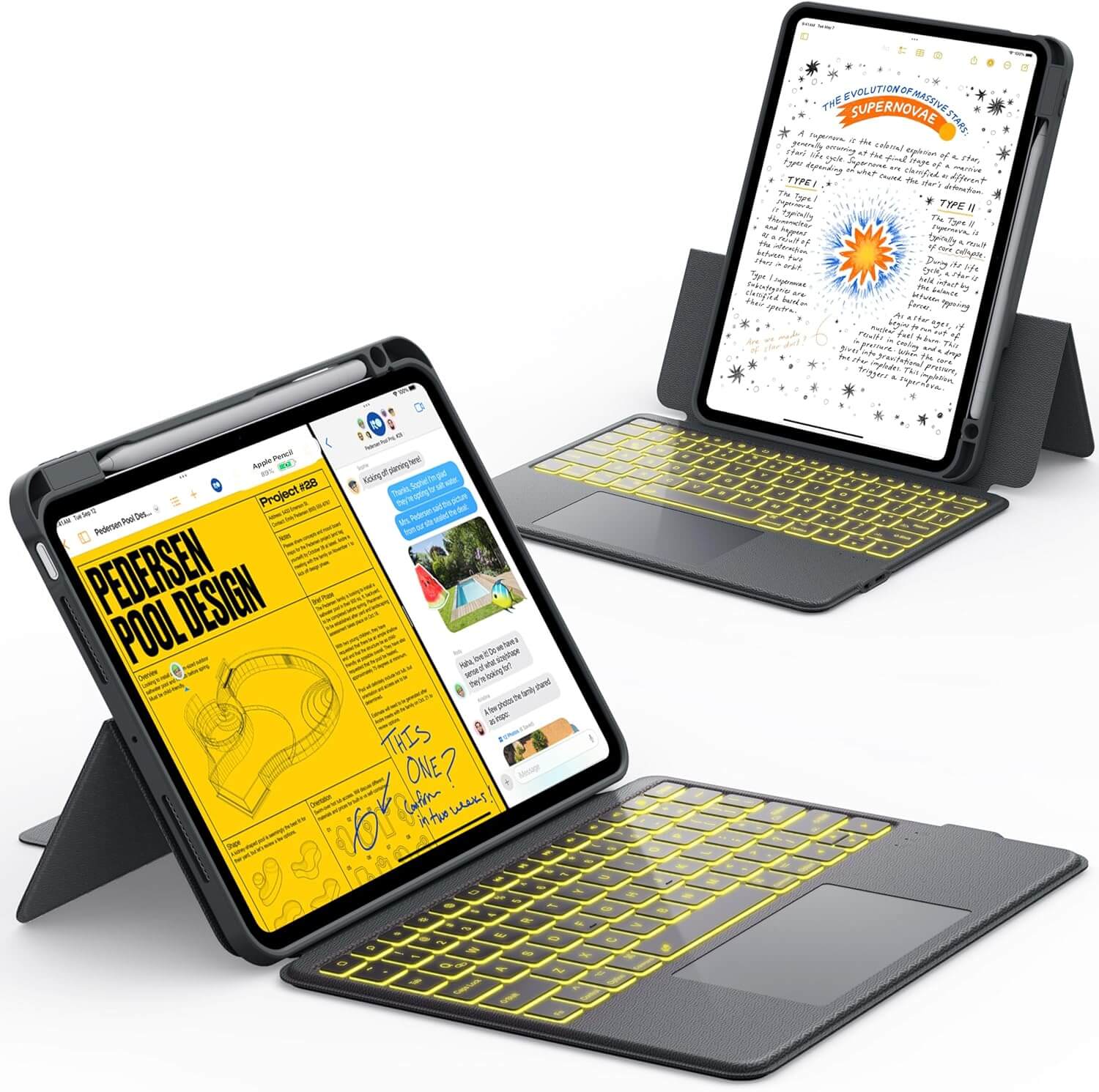


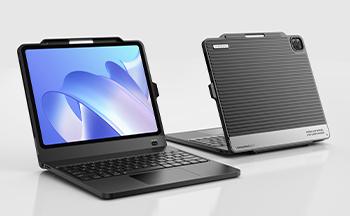
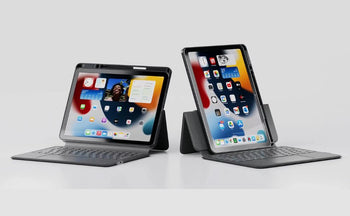
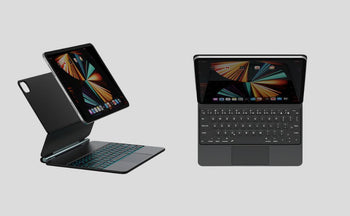


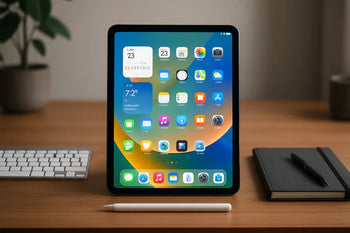


![How to Use iPad as Second Monitor for Mac [2025 Guide]](http://www.chesona.com/cdn/shop/articles/How_to_Use_iPad_as_Second_Monitor_for_Mac.png?v=1762743405&width=1100)





